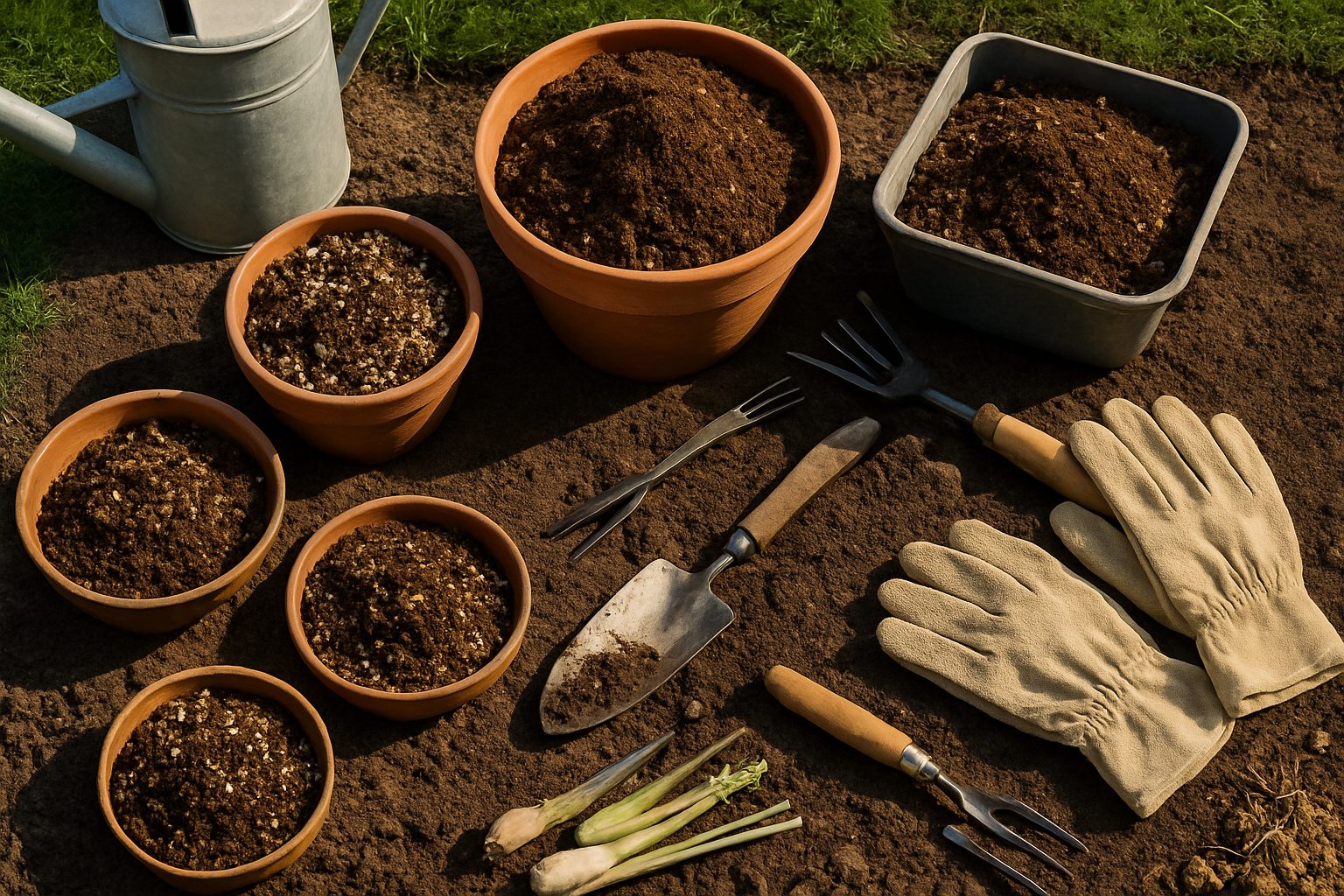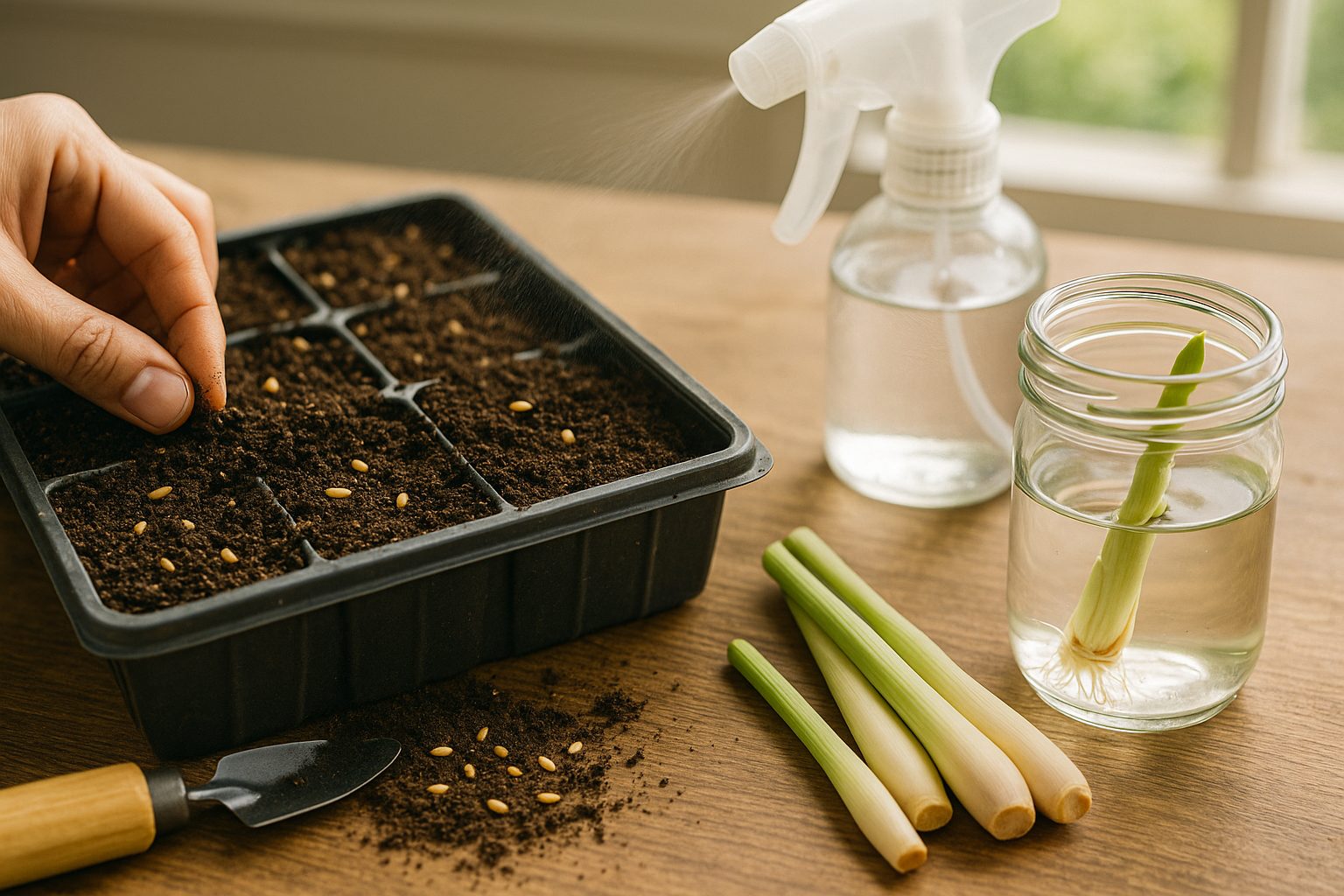What is Lemongrass?
If you’ve searched for lemongrass growth time, chances are you’re fascinated by both the plant’s unique look and its versatile uses in the kitchen and beyond. Lemongrass is a tall, grass-like herb known for its slender, pale-green stalks and refreshing lemony aroma with a hint of ginger.
Its citrus-like flavor adds a bright, zesty note to dishes, making it a staple in Southeast Asian cooking—think Thai soups, curries, and Vietnamese marinades. Beyond the kitchen, lemongrass is cherished for its medicinal properties; it’s steeped in teas to relieve stress and aid digestion, while its essential oils are often used in natural remedies and aromatherapy.
Native to regions of South Asia and now grown worldwide, this adaptable herb brings global flair to home gardens everywhere. Lemongrass’s resilience, fast-growing nature, and minimal care requirements make it especially attractive for beginners.
Whether you’re looking to spice up your culinary creations or start a low-fuss herb garden, lemongrass is the perfect introduction to homegrown flavor and function—plus, it grows into an elegant ornamental feature in your yard or windowsill garden.
Choosing and Preparing a Planting Site

Selecting the right spot for your plants can make all the difference in their health and productivity. Most flowering and fruiting plants thrive in full sun, which means they need at least six to eight hours of direct sunlight daily.
If you’re in a cooler climate, choosing the sunniest spot you can find helps ensure your plants get enough warmth and energy. Meanwhile, those in hot, southern regions might benefit from some afternoon shade to prevent scorching.
When it comes to soil, aim for one that’s well-draining and rich in organic matter. Heavy clay tends to hold too much moisture, while sandy soils may need extra compost or aged manure to boost nutrients and retain water.
If you’re planting directly in the ground and your soil isn’t ideal, consider mixing in peat moss, worm castings, or leaf mold to improve structure and fertility.
For those with limited space or less-than-perfect soil, containers are a smart alternative. Containers give you control over the soil mix and can be moved to adjust for sunlight or weather changes. Just ensure pots have drainage holes and use a high-quality potting mix.
By tailoring your site and soil to your plants’ needs, you’ll set the stage for strong, vibrant growth.
Lemongrass Propagation Methods (Seed vs. Stalk)

When growing lemongrass, you can start from either seeds or stalks, but each method has its own pros and cons. Growing from seed gives you lots of plants inexpensively, but it takes longer—expect 3-4 months before you get harvestable stalks.
To start lemongrass from seed, sow seeds on the surface of moist seed-starting mix, barely cover them with soil, and keep the environment warm (70-75°F) and bright. Mist regularly to maintain humidity. Germination can take two weeks or more, and once seedlings have two sets of leaves, transplant them into larger pots.
On the other hand, propagating from stalks—especially store-bought lemongrass with the bulb intact—is much faster and easier. Simply trim the top, place the stalk bulb in a glass of water, and put it on a sunny windowsill; roots will appear in about a week. Once roots are 1-2 inches long, plant in potting mix or directly in the garden.
Root division is similar: dig up an established clump, separate healthy stalks with roots attached, and replant. Success is higher with well-draining soil and regular watering.
Stalk or root division methods produce usable lemongrass within 1-2 months, making them ideal for impatient gardeners. For any method, keep plants warm and never let them dry out for the best results.
Planting and Routine Care
When planting, start by choosing a spot with plenty of sunlight—most garden plants need at least 6 hours per day. Space your plants according to their mature size; for example, tomatoes need 18–24 inches between each plant, while marigolds can be as close as 8–10 inches.
Dig a hole just deep enough so the root ball sits at soil level, or slightly deeper for seedlings that benefit from strong anchoring, like tomatoes or roses. Water generously after planting to help roots establish, ensuring the moisture reaches deep into the soil.
For ongoing care, stick to watering when the top inch of soil feels dry (usually once or twice a week, more in hot weather), aiming for consistent moisture but not soaking. Fertilize every 4–6 weeks using a balanced or plant-specific formula—organic compost is a great option and gentler on your plants.
Mulch around the base with shredded leaves, straw, or wood chips, keeping the mulch a few inches from the stems to ward off rot; this helps retain moisture and keeps weeds down.
Pay close attention to seasonal tasks:
- Prune shrubs and perennials in early spring or after blooming.
- Regularly deadhead spent flowers to encourage new growth and tidy up the bed.
- Watch for pest issues like aphids, slugs, or powdery mildew; tackle them quickly by picking pests off, spraying with insecticidal soap, or improving air circulation to discourage disease.
With these straightforward routines, your garden will thrive from season to season.
Harvesting and Using Lemongrass
For optimum flavor and healthy regrowth, harvest lemongrass when the stalks are about half an inch thick and at least a foot tall—usually in late summer or early fall. Use a sharp knife or garden shears to cut the stalks at ground level, taking only the thicker, outer stems and leaving the tender core intact so the plant can continue growing.
After harvesting, peel away the tough outer layers to reveal the aromatic inner stalk. To store fresh lemongrass, wrap the stalks loosely in a damp paper towel and place them in a resealable plastic bag in the refrigerator for up to two weeks. For longer storage, chop the stalks and freeze them in an airtight container.
Lemongrass is a favorite in Southeast Asian recipes—think Thai soups, curries, and teas—where it infuses dishes with a citrusy zing. It’s also valued in herbal medicine for its calming properties and is often brewed as a tea to soothe digestion or relieve stress. Whether you’re spicing up dinner or looking for a natural remedy, a little prep can help you make the most of this flavorful herb year-round.
FAQs About Growing Lemongrass
Many people wonder if lemongrass can thrive indoors—it can, as long as it gets plenty of sunlight, ideally on a windowsill with six or more hours of direct light. If you live in a colder climate, bring your pots inside for the winter or overwinter trimmed stalks in water to keep them alive until spring.
Lemongrass isn’t invasive like mint, but its clumps can grow large outdoors, so give it plenty of space or use containers to manage its growth. If your lemongrass starts turning brown, check that the soil isn’t waterlogged, and trim dead leaves to encourage fresh growth.
Pests and diseases are rare, but watch for spider mites if you’re growing lemongrass indoors. Beginners who struggle with germination can try propagating from store-bought stalks in water.
For more in-depth help, check out local extension office guides or the book Growing Herbs for Beginners. Online forums, like Reddit’s gardening community, also offer practical and friendly advice.
